Why is the first nuclear submarine named the Nautilus?Come to Chengdu Sands New Show to see the baby
Author:Cover news Time:2022.08.07
Cover reporter Zeng Jie intern Lin Xiao
As long as there is a sea in my heart, there are Maldives everywhere. On August 7th, Liqiu. If you want to find a cool place in the hot summer, you may wish to come to the Chengdu Sands Site Museum to visit the summer popular science exhibition "Pirama 'Belle' -Wonderful shellfish world".
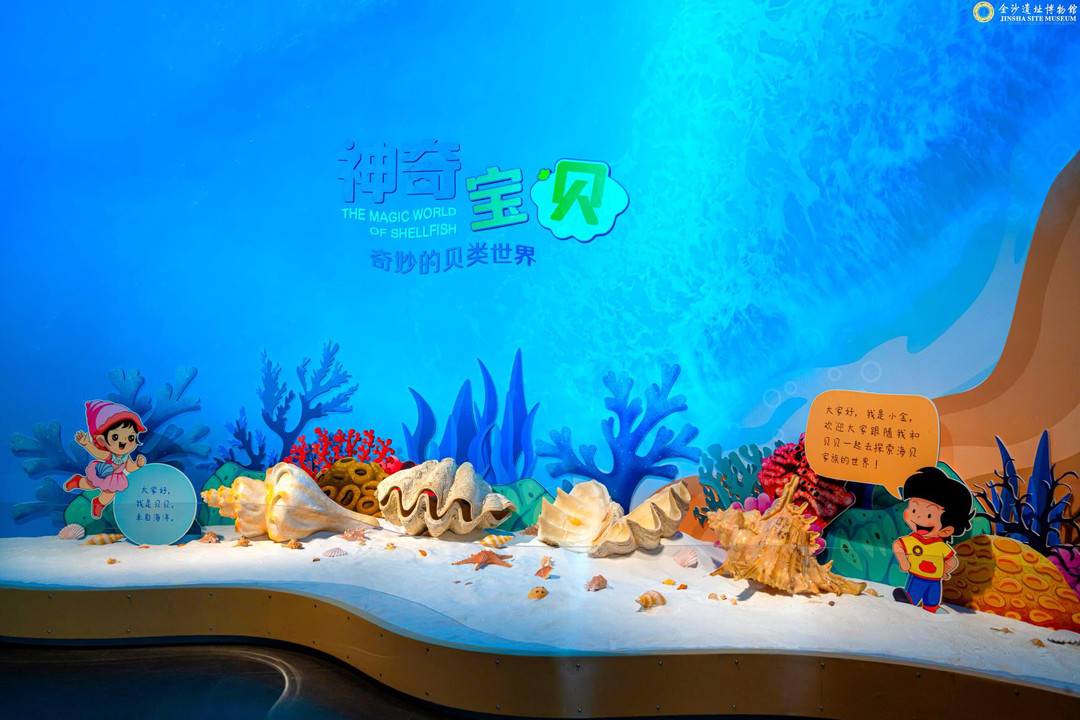
exhibition site
After the Sands Site Museum resumed the opening of the museum, he ushered in a group of "catching the sea" teenagers. Whether it is the sea shells unearthed from Sanxingdui and Sands, the pupae and nautilus hidden by the China (Hainan) South China Sea Museum, or the first exterior snail furniture set, all have excited children. Seal, by the way, learn the cold knowledge hidden in the "baby".
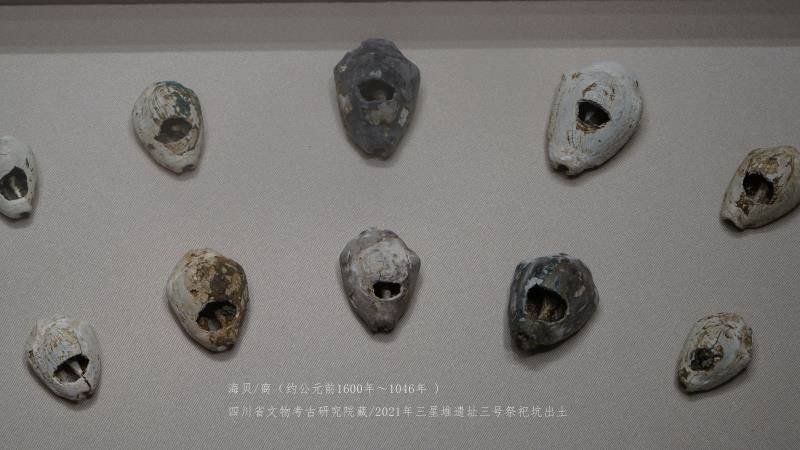
The first exhibited Sanxingdui No. 3 pit Haibei, the Sichuan Provincial Cultural Relics and Archeology Research Institute
It is reported that this exhibition concentratedly displayed more than 1,200 (sets) from 5 precious shellfish specimens and related cultural relics from China (Sichuan Museum, Sichuan Museum, Sichuan Cultural Relics and Archeology Research Institute, Sichuan Guanghan Sanxingdui Museum. The exhibition combines natural exploration and historical and cultural science popularization, from the design of the exhibition board to the display hall, from interactive games to popular science folding pages, as well as social education activities that are widely loved by children. The wonderful shellfish world, without going out of Chengdu, experience the fun of "catching the sea".
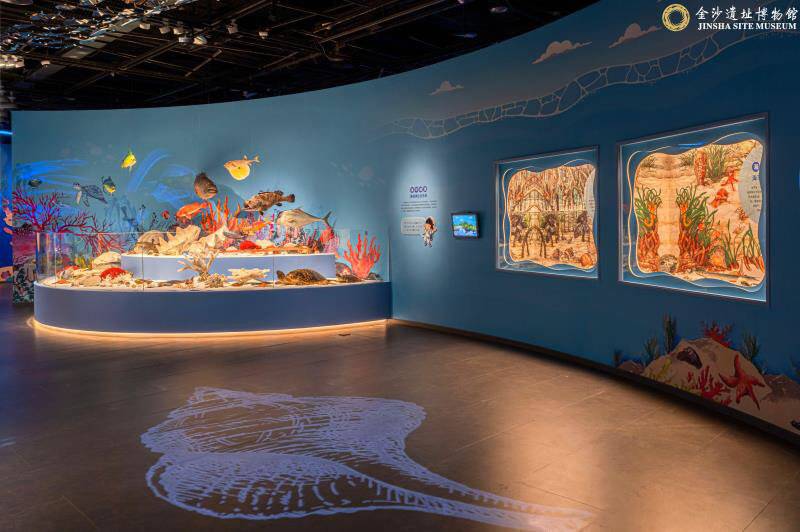
exhibition site
Kobo "Bei" entered Sichuan for the first time
Thousands of years ago, the ancient Shu ancestors who lived in the inland not only collected a large number of sea shells, but also made shell -shaped utensils with cherished beautiful jade and bronze to dedicate to the mountains and rivers of the heavens and the ancestors. This exhibition is specially based on "Where does the ancient Shu Hai shell come from" as the starting point. Through the first -person way, the sea shells, turquoise shells, Yubei, and Yuba and Jinsha site from the ancient Shu civilization site Sanxingdui and the Jinsha site are Bronze bronze wares, such as "our life", "our family", "we and humans", three sections, in all directions reveal the natural passwords of the shell world, as well as the important journey between the long past and witnessing history between the shell and the human beings Essence
As Sichuan's first Beibei culture theme exhibition, the number of exhibitions in this exhibition has reached the most special exhibitions in the Sands Site Museum over the years and is rich in types. Among them, shellfish, fish, corals and other specimens have nearly 1,000 pieces (sets), and more than 200 related cultural relics (sets). The audience can see 29 rare shellfish specimens such as the four major snails in the world, and they can also encounter hundreds of unique and colorful marine shellfish. At the same time, they can also enjoy the ancient shell coins, portrayed the micro -sculpture, and exquisite snails. The artwork, as well as the snail furniture set of the China (Hainan) South China Sea Museum for the first time.

Nautilus, China (Hainan) South China Sea Museum Collection
It is worth mentioning that there are some cold knowledge in the shellfish world. Names is a kind of activated stone species that has survived hundreds of millions of years. It is named because it looks like a nipple of parrot. It is a key for us to open the door of the nuclear submarine.
Why is the world's first nuclear submarine named the Nautilus? Because the nautilus shell is divided into many gas rooms full of gases, there is a string between the gas chamber, and the emissions of the gas can be flexibly controlled to control its own float. Scientists use this characteristic to solve the problem of submarine's floating regulation.
If you are attracted by these beautiful shellfish, you may wish to stop and look at the text on the exhibition board, and you can master a lot of knowledge.
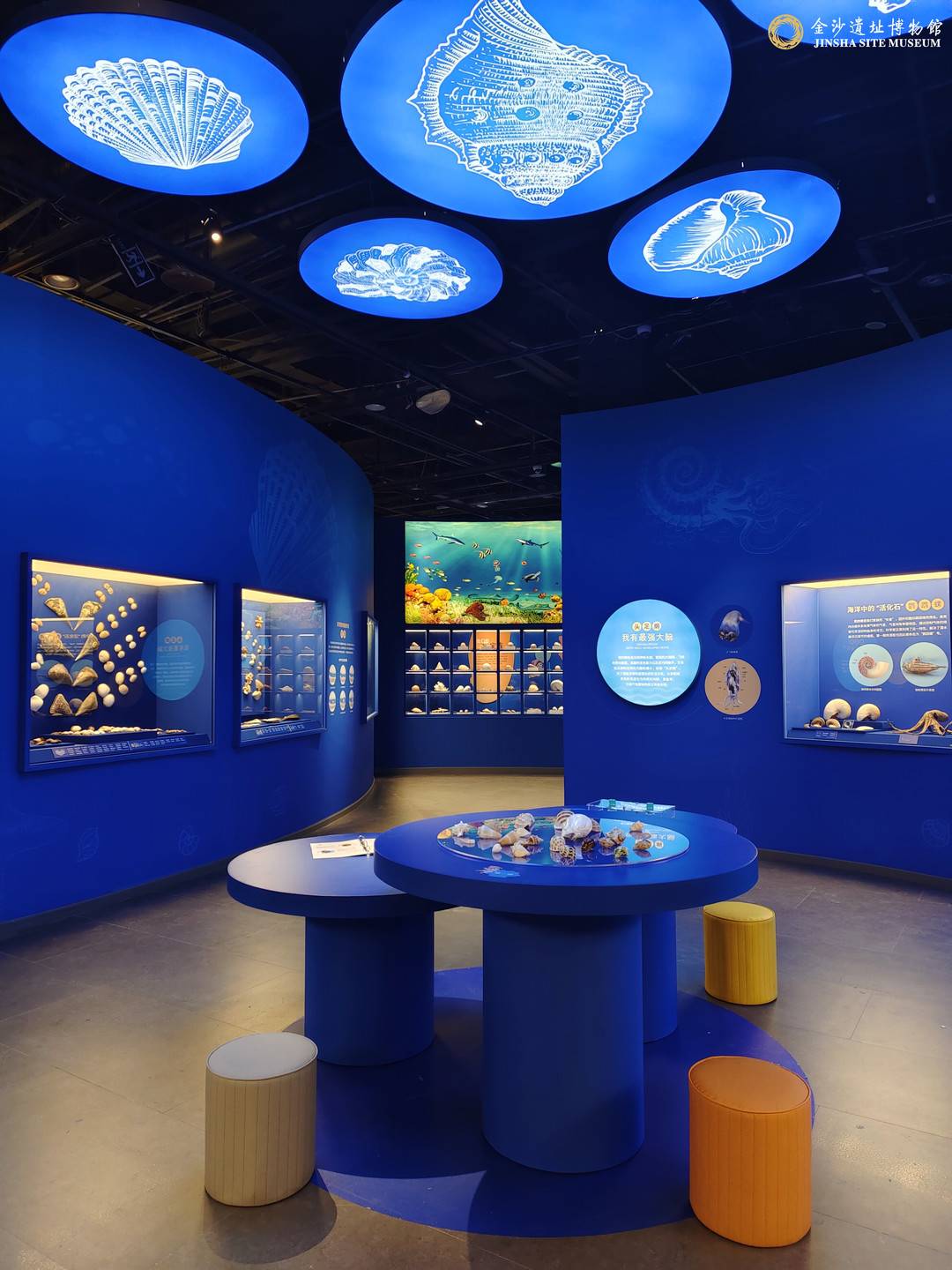
Exhibition hall interactive area
The guide book becomes a Tibetan treasure map
What kind of experience is it when it meets Shanghai Yang in the midsummer? Entering the exhibition hall, the beach is yellow, light blue, and dark blue. The cool marine color system continues to lead the audience to the depths of the ocean. In the middle of the stroll, you can meet with the various marine shellfish, and you can meet hundreds of coral reef ecological scenes of "dance" of hundreds of marine life, huge projection walls over 30 square meters, and gorgeous "ocean scenes" ... With the sparkling simulation waves and light and shadow, people seem to shuttle in the dreamy "underwater world".
It is worth mentioning that the design of the exhibition design focuses on interaction and interest. The cartoon image created by the ocean "Beibei" and the ancient Shu "Little Gold" is transformed into a small interpreter to tell the mystery of the shell world. The exhibition is more easy to understand. At the same time, the popular science guide manual has transformed into the "treasure hunting map" of the exhibition hall. Under the guidance of "Beibei" and "Xiao Jin", the audience answers the questions and collects seals to create their own viewing notes.
In addition, various interactive experience devices are set in the exhibition hall. You can get close to the bertoic sound of the sea, and you can touch some of the shells by yourself, or explore the wonderful shellfish world by turning on plates, turntables, puzzles, and knowledge of medicinal materials.
What's more, the children also participated in the exhibition in the form of crowdfunding and crowdfunding, using a childlike shell -themed painting to depict the shellfish world in their eyes.
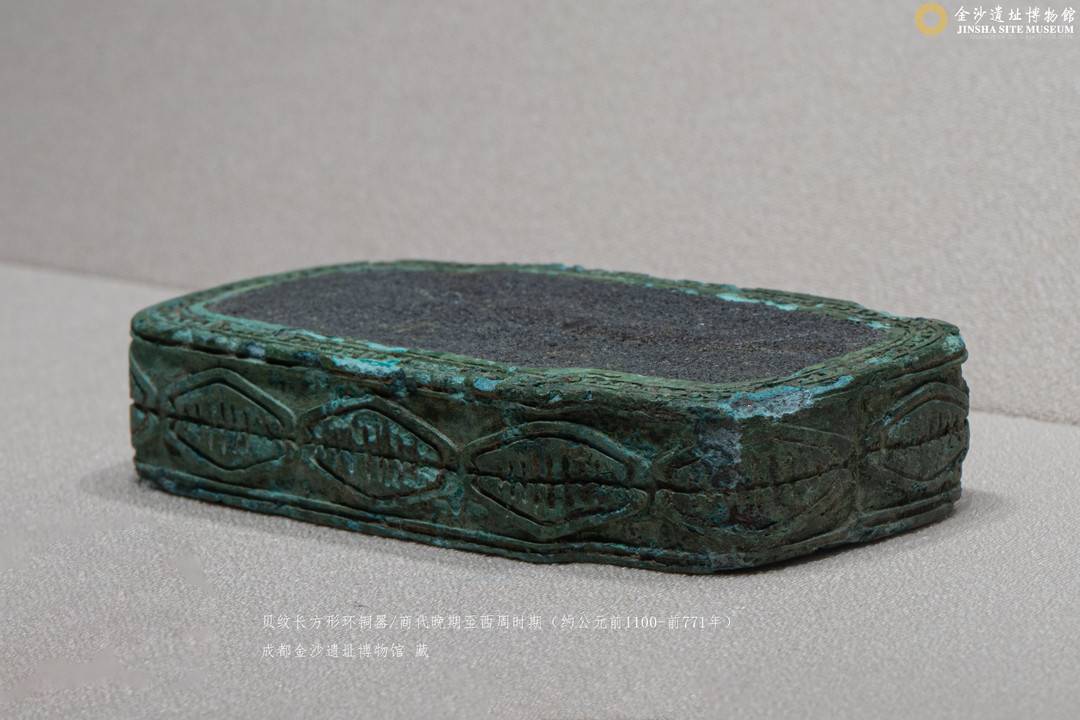
Belly rectangular copper bronze, Chengdu Sands Site Museum Collection
Fancy unlock shellfish world
In addition to the design of the exhibition hall, this exhibition also extended the wonderful experience of the magic treasure "shell" to the exhibition hall. China (Hainan) South China Sea Museum brought more than 30 ames created by various marine life and fishermen's image, which echoed the treasure "shells" in the exhibition hall. After watching the exhibition, the audience can also collect a gift from the ocean. At the same time, the theme emoji package launched by this exhibition was also launched on the WeChat platform.
It is understood that the supporting activities of the exhibition are also colorful. During the exhibition, the Sands Site Museum combined with characteristics of handmade and Pino archeology, and will successively launch the "Haibei Story" series of social education activities. Every day in the exhibition hall, 30 DIY handmade materials will be distributed. You can also feel the fun of Bei culture. In addition, Sands will also invite experts and scholars in related fields to conduct special lectures to bring dry goods to the audience. In addition, Jinsha also "moved" the exhibition to the online through the form of the VR panoramic exhibition hall and the topic page. Visitors who cannot go to the exhibition can also travel through the official WeChat of the Sands Site Museum and the official website to travel long -range "wonderful shellfish world".
Kind tips:
The Chengdu Sands Site Museum will strictly fulfill the requirements of "limited, appointment, and peaks", and implement real -name system appointments to enter the museum. Visitors can learn about related control measures in advance through the official website of the Sands Site Museum and WeChat public account. When all tourists enter the museum, they must present a 48 -hour kernel detection negative certificate. Wearing a mask throughout the journey, cooperate with the on -site staff to do a good job of epidemic prevention inspection.
(Picture of this article according to the Sands Site Museum)
- END -
Hui Neng: "Reformists" of Buddhism Sinicization, Religious Sinicization · Characters
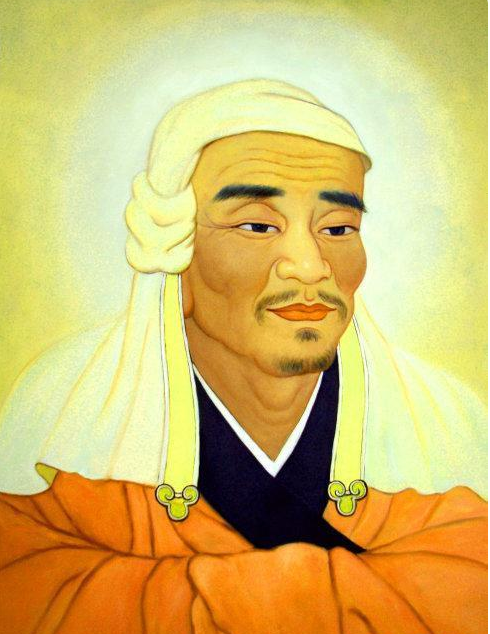
In the first year of Tang Gaozong Xianheng (670 years), Lingnan Xinzhou (now Xinxi...
The Painting and Calligraphy Exhibition of Hebei Provincial Literature and History Research Museum opened today
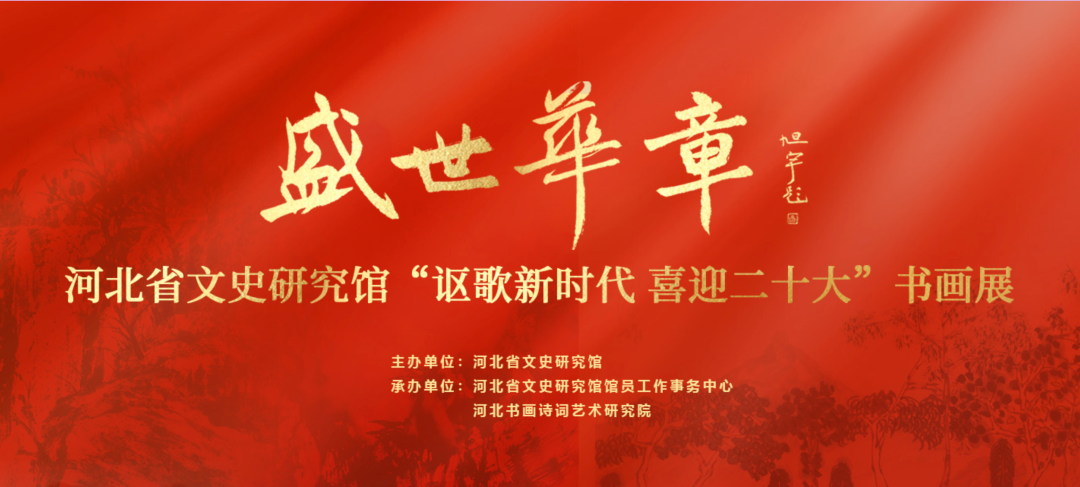
In order to sing the great achievements of the new era, depict the gorgeous magnif...